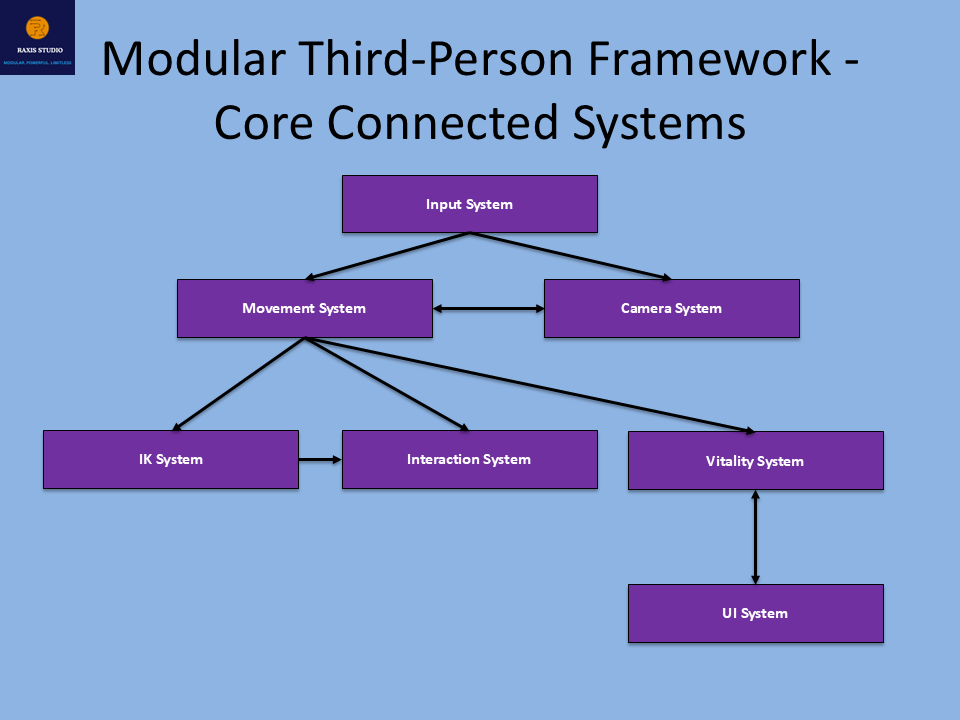How the Modular Third-Person Framework Saves Weeks of Development Time

Intro: Why Time Matters in Game Development If you’re an indie developer or part of a small studio, you know the reality: time is your most limited resource. You don’t have large teams or endless budgets. What you do have is creativity, ambition, and the drive to bring your ideas to life. But too often, that time is wasted on rebuilding basic systems: locomotion, stamina, climbing, cover, interaction. They’re necessary, but they’re not what makes your game unique. That’s why I built the Modular Third-Person Framework — to give developers a ready-made foundation that saves weeks of setup, scales cleanly, and lets you focus on creating.
The Challenge: Reinventing the Wheel Developers often run into the same problems:
- Weeks lost to setup → creating locomotion, cover, and climbing from scratch eats entire sprints.
- Complex transitions → switching from climbing to ledge exits or from swimming to diving often breaks animations.
- Collider headaches → uneven terrain and slopes cause clunky movement and clipping.
- Tightly coupled systems → input, animation, and interaction scripts become tangled, making maintenance painful.
And when it’s time to scale up, many teams end up rewriting everything.
The Solution: Modular Third-Person Framework The framework provides a production-ready foundation built for speed, flexibility, and scalability. Included Out-of-the-Box
- Locomotion System → walk, jog, sprint, crouch, crawl, and roll.
- Dynamic Collider System → automatically adjusts collider properties on slopes and uneven terrain.
- Climb System → ladder, wall, pole, and rope climbing with seamless ledge exits.
- Cover System → high and low cover with automatic collider adjustments. Players can perform low-cover actions even on high-cover objects.
- Parkour System → both vertical and horizontal actions: vaults, slides, and jumps for fluid traversal.
- Swimming & Diving System → enter water, swim, dive, and exit via ledges with smooth transitions.
- Ledge Mechanic → exit water or climb naturally using ledges.
- Utility Interactions → ready-to-use scripts for doors and elevators.
- IK System → realistic foot placement and hand alignment, extensible to NPCs, AI, and even non-humanoid objects.
- Vitality Systems → standalone health, stamina, and breath modules that can also be mirrored beyond the player.
- Interaction System → modular scripts (cover, climb, parkour, water, ledge, utility) attach directly to scene objects and work outside the controller.
- UI System → health, stamina, and breath bars, plus a ready-made main menu.
- Input System → powered by Unity’s New Input System, fully configurable from the inspector.
In short: this isn’t just a controller — it’s a complete modular foundation for Unity developers.
Proof: Real Time & Quality Savings Without the framework:
- Week 1 → locomotion setup (often hardcoded, no state separation).
- Week 2 → add climbing prototype (logic tightly coupled to player controller).
- Week 3 → implement cover mechanics (animator dependencies, fragile transitions).
- Week 4 → add parkour transitions (duplicate code, no clean factory/state management).
- Week 5 → hook stamina and health (UI tied directly into gameplay logic).
- Week 6 → debug colliders, fix IK, patch issues.
Even after 6 weeks, the result is usually not built with best practices — it may work, but it’s brittle, harder to extend, and expensive to maintain in the long run. With the framework:
- Day 1 → locomotion, climbing, cover, parkour, stamina, and interaction systems already functional — and built on clean architecture (interfaces, Enums, ScriptableObjects, factories, and events).
- Day 2 → import your animations and adjust ScriptableObjects.
- Day 3 → focus on the unique mechanics that make your game special.
Developer-Friendly by Design The framework isn’t just a collection of features. It’s built using solid engineering practices to ensure modularity, scalability, and performance. Key Design Principles
- Composition Over Inheritance → systems are built from interchangeable parts using interfaces and managers.
- Interface-Driven Design → all subsystems (movement, vitality, interaction, input, UI) use interfaces for contract enforcement and easy extensibility.
- State Pattern → clean, manageable state transitions.
- Command Pattern → input handled as commands, easy to extend.
- Template Method Pattern → workflows defined in abstract classes, details in subclasses.
- Factory Pattern → state instantiation via service locators.
- Bitmask/Flag Pattern → Enums instead of strings for safe, performant code.
- Event/Mediator Pattern → decoupled communication between systems.
- ScriptableObject-Driven Data → designer-friendly, testable data flow.
- Editor/Runtime Separation → debug tools excluded from builds for end-user performance.
- Centralized State Management → PlayerStateManager coordinates transitions and logs them for debugging.
- Context-Driven Dependencies → PlayerMovementContext provides all required components (input, animator, collider, stamina, IK, camera) in one place.
- Lazy Instantiation of States → PlayerMovementInstances initializes and caches every movement state only when needed.
- Unified State Contracts → all states implement IPlayerState with OnStateEnter, OnStateUpdate, and OnStateExit, ensuring consistency.
Use Cases: Who It’s For
- Indie developers → prototype faster, get to testing and iteration without weeks of groundwork.
- Small studios → save hundreds of hours by using the framework as a reliable backbone.
- Production teams → start fast, then extend or replace systems with your own implementations.
- Beyond the player → systems like IK, vitality, and interactions can also be reused across NPCs, AI, and even non-humanoid objects for world consistency.
Build Games, Not Just Systems: At the end of the day, players won’t remember how many hours you spent fixing collider clipping or re-coding stamina bars. They’ll remember the worlds you built, the mechanics you designed, and the stories you told. The Modular Third-Person Framework gives you back that time.
👉 Get the Modular Third-Person Framework on the Unity Asset Store: Modular Third-Person Framework | Game Toolkits | Unity Asset Store

